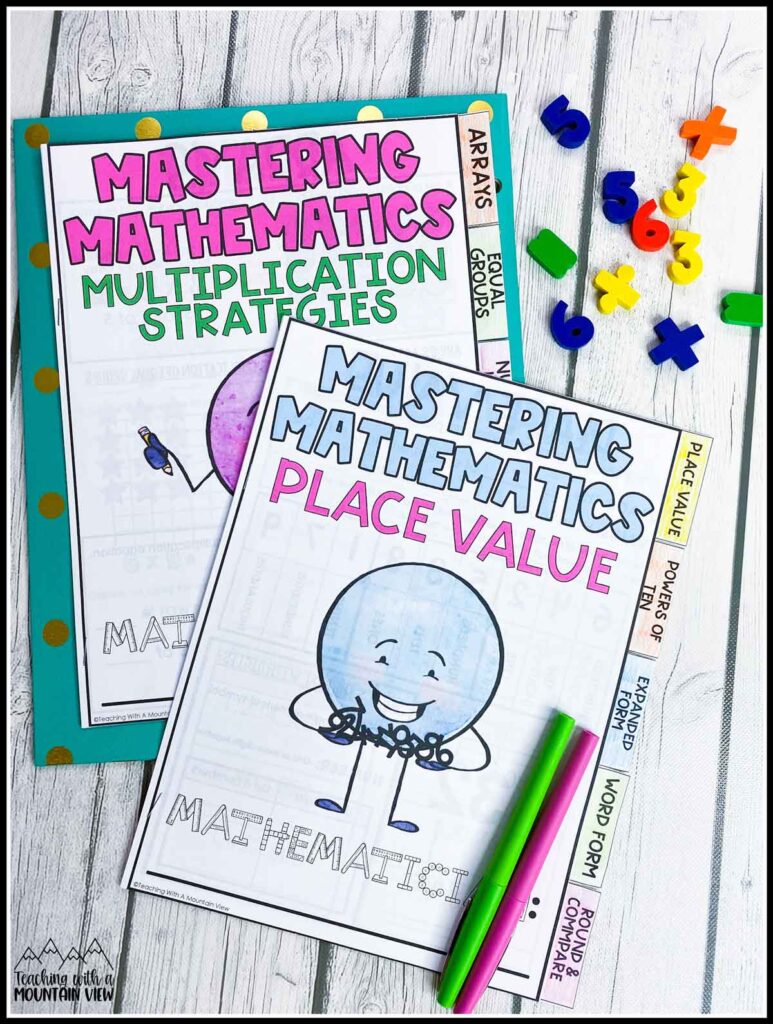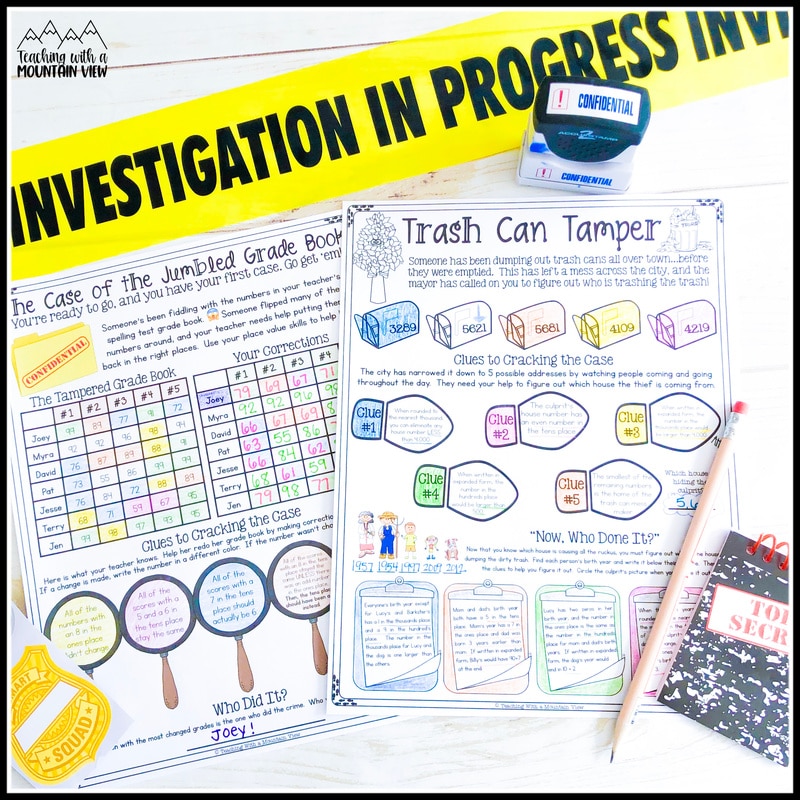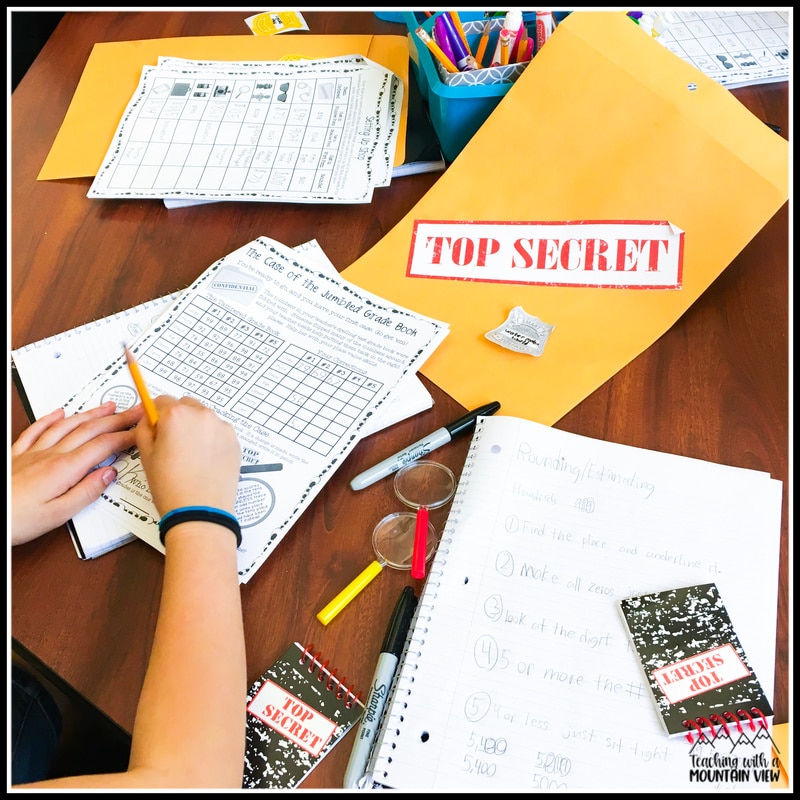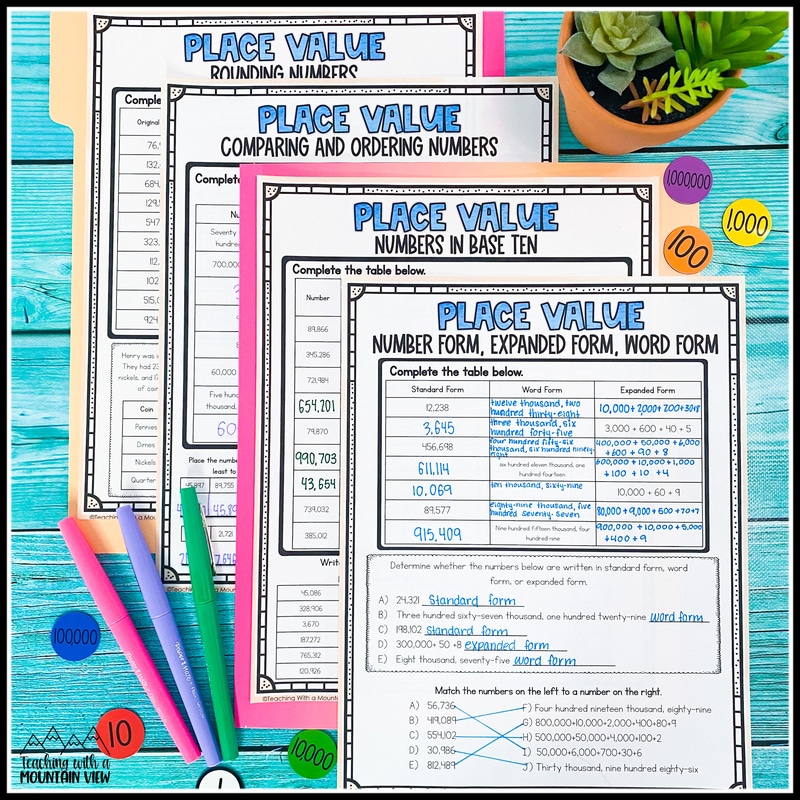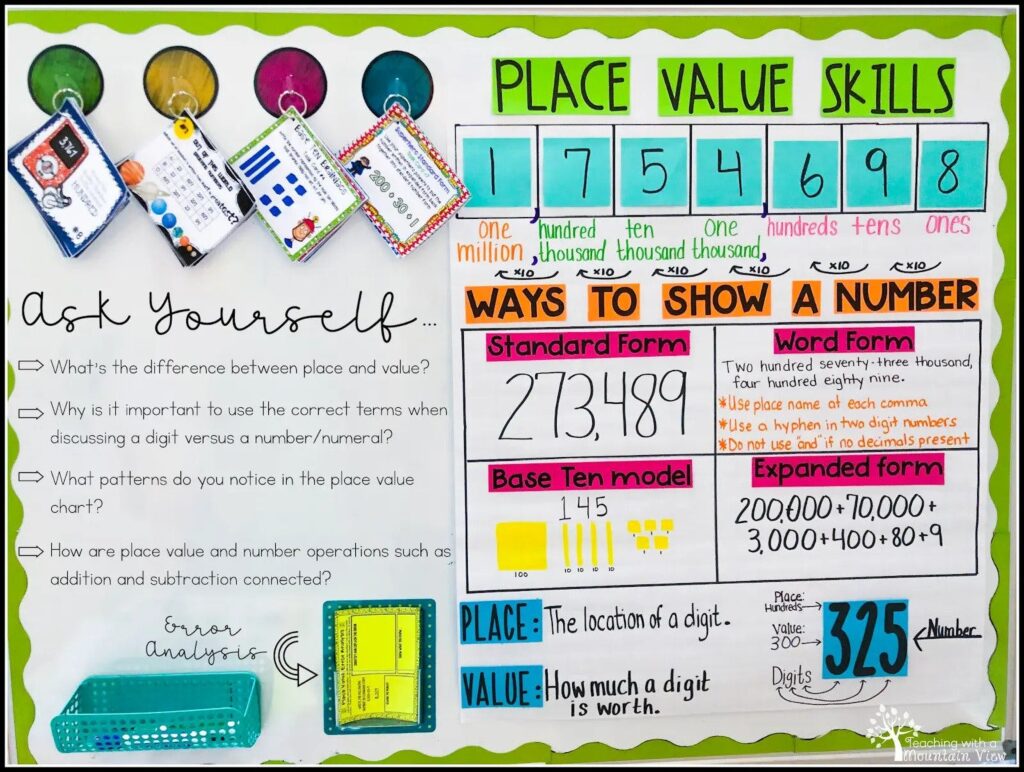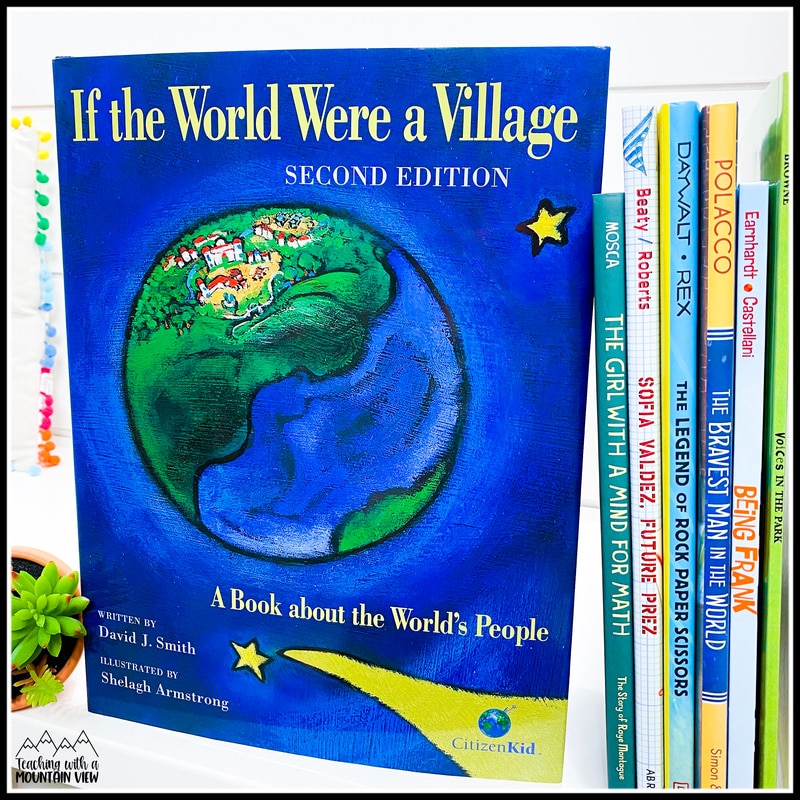The Complete Guide to Place Value Lessons
By Mary Montero
Share This Post:
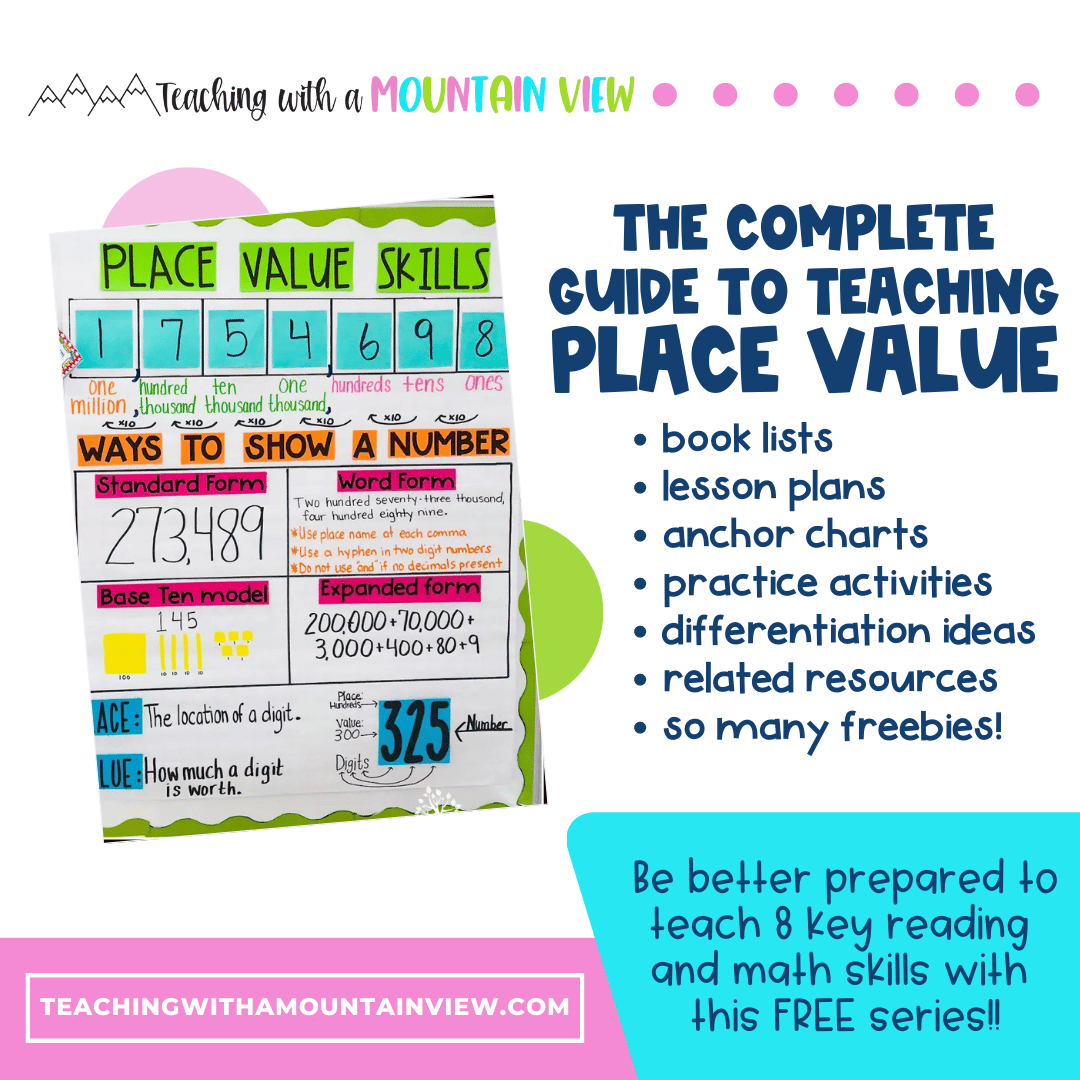
I always start the year with teaching place value, whether I’m teaching 2nd, 3rd, 4th, or 5th grade! I compiled a ton of ideas, an introductory lesson, essential skills, book list, freebies and more into one gigantic (and FREE!) PDF Guide to help you plan your place value lessons. This massive freebie is 27 pages long and includes Place Value and Rounding Anchor Charts, Place Value Mystery Number Task Cards, A Fun Introductory Activity, and a Place Value Choice Board. I have also linked half a dozen extra freebies inside it!
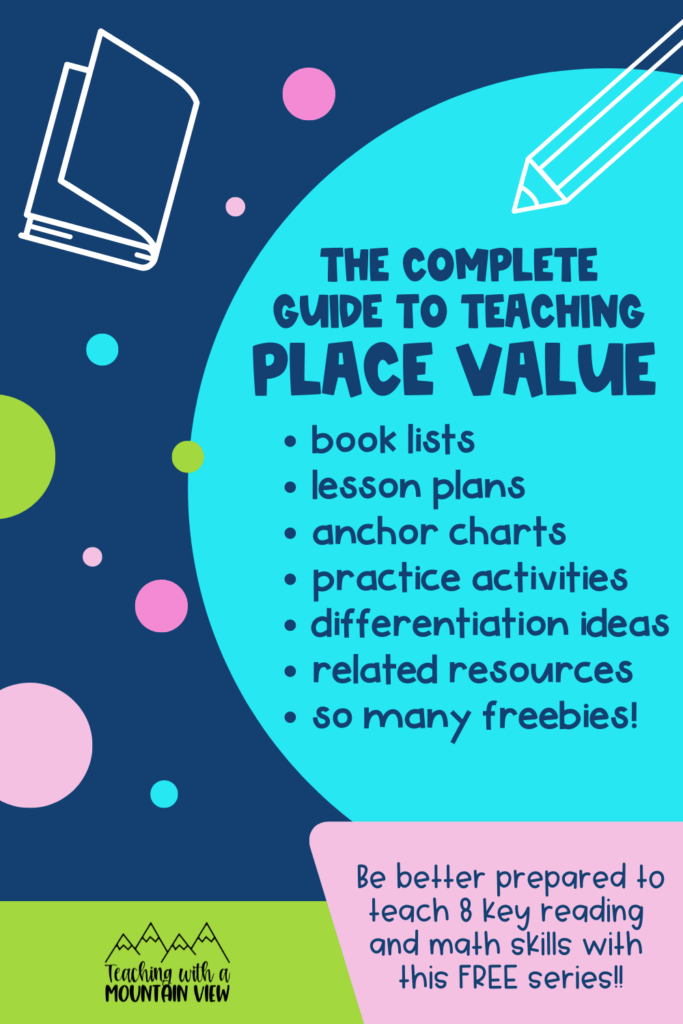
Download Everything You Need– for free!
This free PDF guide will allow you to have all of the place value resources right at your fingertips.
Place Value Standards
An understanding of the place value system is the backbone of success in math. The skills required of students progress as they move through the grade levels, but many students require a review of prior grade level skills well beyond the age at which they appear in the standards.
Standards and Skills – Numbers and Operations in Base Ten – Place Value Understanding
Note: I have only included place value-specific skills. Operation strategies based on place value skills are not included.
Teacher Tip: Use these standards for vertical alignment and differentiation. For example, if I’m teaching gifted 3rd graders, not only do I dive more deeply into grade level standards, but I look at the next grade level standard to accelerate their learning as well. For intervention, I typically look back at the previous grade level standards to be sure there are no gaps in knowledge preventing students from moving forward.
2nd Grade Expectations:
- Understand the value of the digits in a three-digit number
- Count within 1000; skip count by 5s, 10s, and 100s
- Read and write numbers to 1000 using base-ten numbers, names, and expanded form.
- Compare two three-digit numbers using >, <, and =
3rd Grade Expectations:
- Use place value understanding to round to nearest 10 or 100
4th Grade Expectations:
- Recognize that in a multi-digit whole number, a digit in one place represents ten times what it represents in the place to its right.
- Read and write multi-digit whole numbers using bas—ten numerals, number names, and expanded form
- Compare two multi-digit numbers using >,<, and =
- Use place value understanding to round multi-digit whole numbers to any place
5th Grade Expectations:
- Recognize that in a multi-digit number, a digit in one place represents 10 times as much as it represents in the place to its right and 1/10 of what it represents in the place to its left.
- Use whole number exponents to denote powers of 10.
- Read, write, and compare decimals to thousandths.
- Use place value understanding to round decimals to any place.
Lesson Introduction
Place Value Suggested Introduction Lesson: 3rd-5th Grade
Note: This lesson plan assumes a basic understanding of the place value system from 1st and 2nd grade standards. This lesson is relevant to grades 3rd-5th. For 5th grade, begin the lesson using a whole number with a decimal.
1. Introduction and Hook
Place a two or three-digit number on the board using magnetic numbers (you can also just write the number). Make sure all the digits in the number are different. Ask students to tell you everything they can about the number they see on the board. Write down EVERYTHING they say, even if it is not accurate. Their statements typically start out basic, but as you push them a little bit more, they will be able to give more and more information. Be sure to ask them about all the different ways the number can be written, if they don’t produce this themselves. If there are any misconceptions that you notice right away, place a star next to them and tell students you’ll come back to them.
2. Base Ten Exploration and Place Value Discs
- At this point, students should have already shown the multiple ways to write the number, including using base ten blocks. Have them use base ten blocks (which they should be familiar with from previous grades) to represent the number. 3rd Graders may find a place value mat helpful.
- For older students (4-5th grade), ask them to show ANOTHER way to represent the number using base ten blocks. These are called equivalent groupings. For example, if the number is 125, they can swap out their hundreds block for ten extra tens and represent the number with 12 tens and 5 ones.
- Then, give students place value discs and have them place the appropriate discs under the base ten blocks. Don’t skip this step. Place value discs are an amazing tool, but since the discs are all the same size, it’s critical that students are able to see the conceptual size difference between values using the base ten blocks.
- Repeat this process with several numbers, using place value specific language even if you haven’t specifically introduced it yet. (Example: The digit seven is in the tens place, and its value is seventy.)
- For older students, end this part of the lesson by having students fill in the blanks on the following chart:
- _____ cube = _____ flats = ______ rods = ______ units
3. Anchor Chart, Direct Instruction, and Interactive Notebooks
At this point, I tell students that we are going to be reviewing and learning important place value skills. I use the anchor chart (see page 6) and interactive notebooks to complete this portion of the lesson. This is when our conceptual math vocabulary comes into play, including the meaning of PLACE, VALUE, DIGIT, and NUMBER. This is also when I review all the ways to write a number. This takes multiple days!
Suggested Lesson Sequence
Place Value Lessons Suggested Skill Sequence: 3rd-5th Grade
Note: This is a suggested sequence in which I teach my students these skills. This is a 12-day sequence, but I typically spend about 3 full weeks on these skills in grades 3 and 5 and about two weeks in fourth grade.
Day 1-2: Place Value Introduction Lesson
Between the introduction, base ten block and place value disk activity, and anchor chart direct instruction, this will likely take 2-3 days and serve as a solid foundation of place value skills.
Day 3-4: Place Value Skill Reinforcement
By this point, you will have likely introduced the major skills that are addressed during the direct instruction portion. I spend at least 1-2 days reinforcing these skills, and I typically use my place value flipbook, task cards, and other assorted activities. I also spend a GREAT deal of time working on whiteboards practicing writing numbers, converting to different forms, reading numbers, modeling numbers, etc. CLICK HERE TO VIEW MY PLACE VALUE FLIPBOOK
Day 5-6: Rounding & Estimating
Lessons are includes in the free PDF! CLICK HERE TO VIEW MY ROUNDING ON A NUMBER LINE CARDS
Day 7: Comparing & Ordering Numbers
Lessons are includes in the free PDF!
Day 8-9: Small Group Review, Enrichment, and Remediation
During this time, I do small, mini lessons to reinforce a variety of skills. Then, I have students work in centers for practice while I work with small groups on enrichment or remediation.
Day 10 & 11: Place Value Detectives Cumulative Project.
CLICK HERE TO VIEW PLACE VALUE DETECTIVES
Day 12: Assessment
CLICK HERE FOR THE FREE ASSESSMENT OPTIONS
Place Value Anchor Charts
I highly recommend creating a template for this anchor chart and FILLING IT IN with you students during the lesson. The blue digits that create the large number are sticky notes so that we can create multiple numbers using our place value chart. Click here to grab the template for free.
Important Considerations During Direct Instruction
- Be sure to teach the specifics of writing numbers in word form, including commas, place names, hyphens, and the absence of the word “and” if a decimal is not present.
- Give students plenty of practice with zeros appearing in a variety of places and formats.
- Each day, as a warmup, we practice working with numbers in a variety of ways. Use MANY numbers with zeros during this process. Practice by:
- Verbally saying a large number for students to write in standard form.
- Showing a model using base ten blocks or disks for students to write in word form, standard form, or expanded form.
- Writing a number in expanded form for students to represent using base ten blocks, standard form, or word form.
- Giving clues such as: A number with a 3 in the tens place, a 2 in the hundreds place, and a 1 in the ones place OR A number with 3 hundreds, 7 tens, and 6 ones.
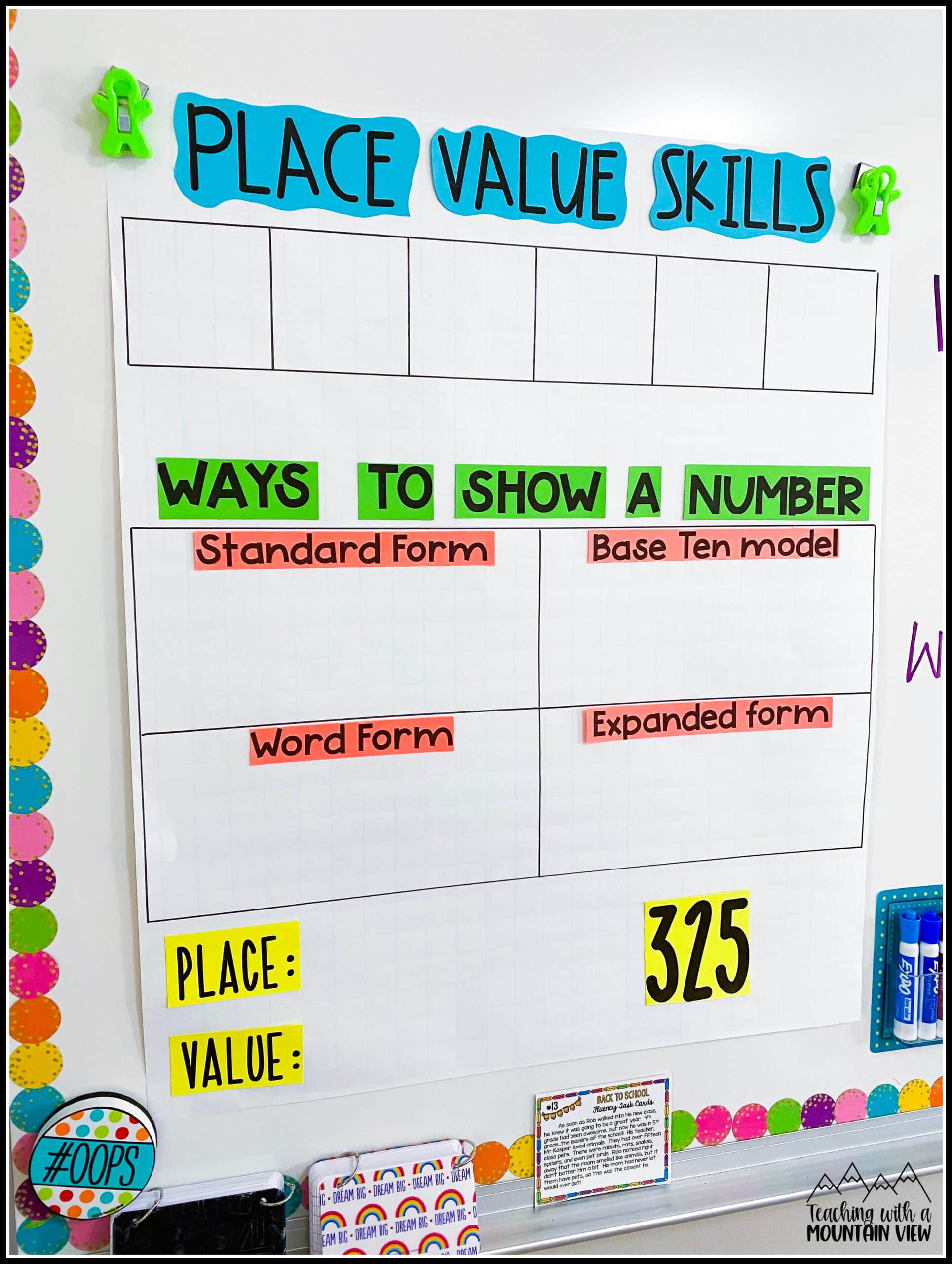
Exposure Checklist
It is vital that students can work with place value skills in a variety of ways. I have compiled a list of visuals, skills, and vocabulary to incorporate, as well as questions to pose to students as you plan your place value unit. You can find this as part of the free PDF download.
Skill-Based Mini Lessons
The free PDF also includes many place value supplemental activity and lesson ideas.
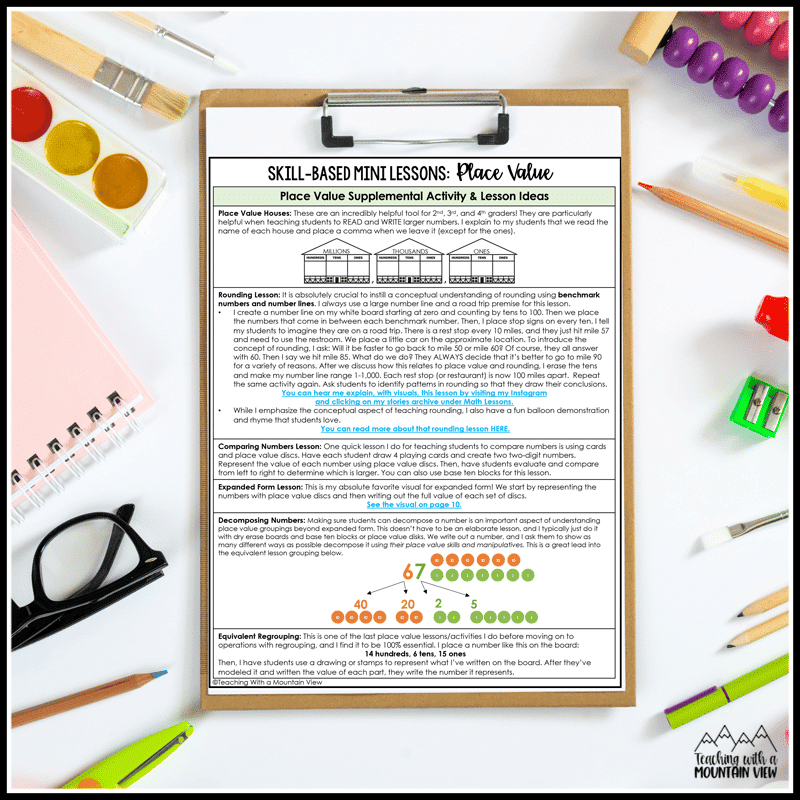
Place Value Book List
Teacher Tip: Use The Guinness Book of World Records (any edition) to help students practice place value skills. Give them criteria to hunt for specific numbers. For example, have students find a record with a six in the tens place.
I also created an Amazon Affiliate List of my favorite place value books. The free PDF includes activity suggestions to use with each book to make planning your place value lessons easier!
Related Blog Posts
These related posts are also great reads before your next place value unit!
- Teaching Place Value
- Decimal Place Value
- Math Tips To Start The Year Strong
- Free Place Value Activity
- Must-Have Math Manipulatives
Related Resources
Mary Montero
I’m so glad you are here. I’m a current gifted and talented teacher in a small town in Colorado, and I’ve been in education since 2009. My passion (other than my family and cookies) is for making teachers’ lives easier and classrooms more engaging.







